Exciting news and wholly appropriate just after Easter, for the Becket Lecture in 2023 will be given on Tuesday 11 July by Michael Wood, the acclaimed author of In Search of the Dark Ages (40th anniversary expanded edition, 2022) and many other works, and Professor of Public History at the University of Manchester. More details and how to book will be available in early May, but just to say following new discoveries Michael’s chosen topic is the lives and works of Archbishop Theodore of Tarsus and Abbot Hadrian, the ‘man of African race’, including their influence on scholarship in 7th-century Canterbury.
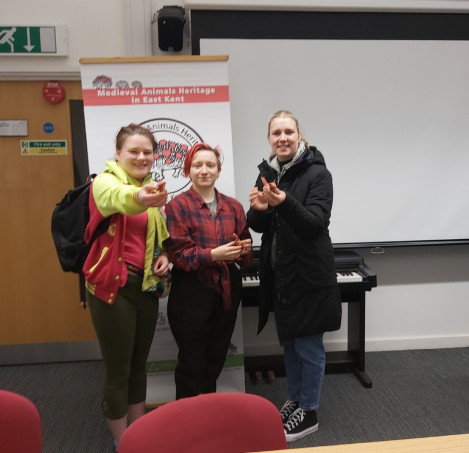
Before getting to foxes, as a trustee of the Brook Rural Museum it is great to be able to bring you the Museum’s latest local history talk which was given as an open lecture in Brook Village Hall recently. The speaker, Dr Katherine Byrne, used to be a sessional lecturer at Canterbury Christ Church University and did her doctorate at the University of Kent where she explored late medieval and Tudor Kentish society regarding the idea of the ‘commonweal’, and for her talk she spoke on ‘Rebellion in Medieval and Early Modern Kent’. So here is the link: https://youtu.be/cW8bTamEpT4 and we hope you enjoy this interesting lecture.
As promised, my first report this week will be on Dr Diane Heath’s ‘Medieval Animals Heritage’ Introducing the Medieval Fox event that took place on a moderately wet Tuesday afternoon. However, the weather did not dampen the spirits of either Diane and her team of Martin Crowther and the three student volunteers: Eli, Eleanor and Freya, with Charlotte Firmin – yes Peter Firmin’s daughter, who led the art and craft activities, or the participants – the SEND families.
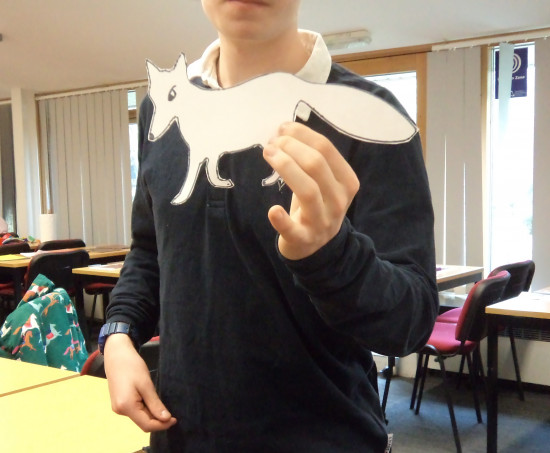
Having gathered in a room in the Laud Building, Diane introduced her team and then having looked at the weather it was decided that doing the art and craft activities first made sense. To provide an idea about medieval foxes, Diane showed everyone the new book on them followed by two ‘medieval fox’ stories, the second being the famous one about the fox, the raven and the cheese to demonstrate just how great a trickster the fox was thought to be. For, as Charlotte said, foxes and birds including hens are not a good mix, especially for the birds! She asked the youngsters to join her with their parents at the various activity tables, one where they could either draw, using stencils if they wanted, a fox or a bird, or indeed any other animal they liked. Having then coloured in their fox or other creature, they glued it to the collage which by the end of the session was full of different animals and birds – as you can see.
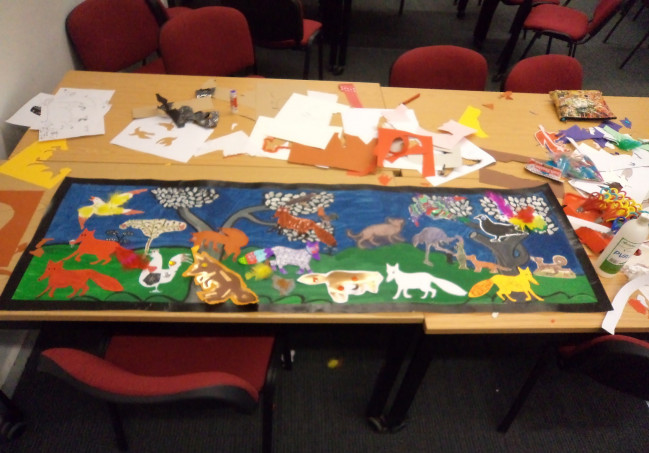
At the next table people were just as busy making models of foxes, and it wasn’t just the youngsters creating these models! As you can imagine, all of this was thirsty work and after about an hour or so, there was an impressive skulk of foxes – an evocative collective noun that culturally sums up how foxes have been conceived in a wide number of European countries. At this juncture, everyone admired the creative work while they stopped for refreshments, ably dispensed by the student helpers, and even though Diane said she was disappointed in the animal-shaped ones being ‘Rich Tea’ biscuits, there were several children who were keen to collect (and consume) a biscuit of every sort of animal available. They, with the adults, ate the shortbread too.
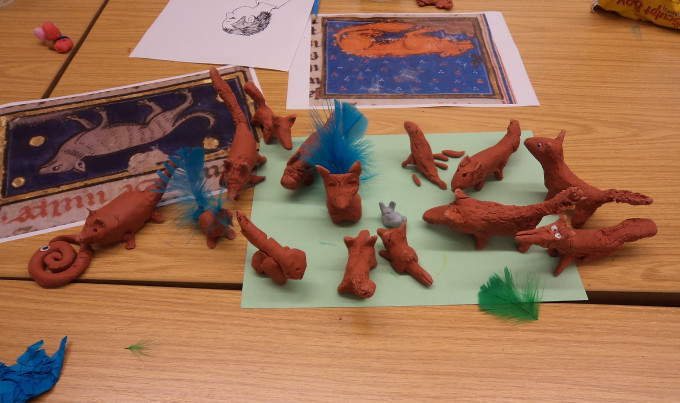
The rain having stopped, it was then time to hit the (fox) trail around the campus. So having donned hi-vis jackets and collected a fox-shaped trail marked on a campus map, everyone followed Diane out to find the first of the ‘skulking’ foxes. Of course, the trail took in the Green Dragons which looked splendid with the apple trees behind them, the apple trees in blossom while the sedum is now lovely and green, and the moss is looking better too. At this point I left the group as they continued around the remainder of the trail and instead headed to Craig at the CCCU Bookshop to see his display of ‘fox’ books, including the new Introducing the Medieval Fox. As you can see, he had made a great job of this and hopefully this will inspire people to discover this lovely, and growing, series of books produced by the University of Wales Press, Diane being one of the general editors.
I did catch up with Diane and Martin later, and I was not surprised to hear that the participants had greatly enjoyed their time doing the various creative activities, walking the fox trail, visiting the Green Dragons and seeing the fox book display, especially the new book by Professor Thomas Wackers. To celebrate this event, there will be some of the artwork and other things added to the NHLF-funded project’s website.
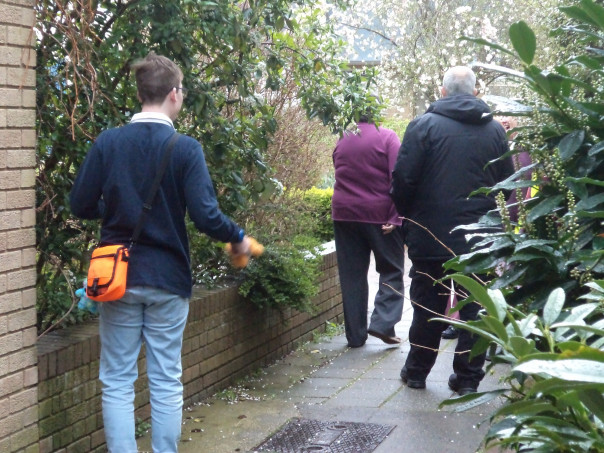
Also this week it will be the monthly meeting of the Lossenham Project’s wills group which this week is back online. As Sophie said, she has been receiving a goodly number of will transcriptions from group members and our collective database continues to grow substantially. Furthermore, I have received more blogs/reports for the Project’s website, and we are now in a position to start having a slot where one can be added on a monthly basis to showcase the research projects people are undertaking. This is an exciting development, especially because this is the time of year when the archaeologists are ready to ramp up their fieldwork activities.
I am also hoping to be able to report further on the growing displays at Eastbridge Hospital, especially concerning links to pilgrimage and to Eastbridge’s sister archiepiscopal hospitals of St John’s and St Nicholas’. For even though the Beaney has a small display about Becket and pilgrimage, there used to be a much bigger display at the Canterbury Heritage Museum, the artefacts presumably currently in storage. Again, watch this space and hopefully I shall have more to report soon.
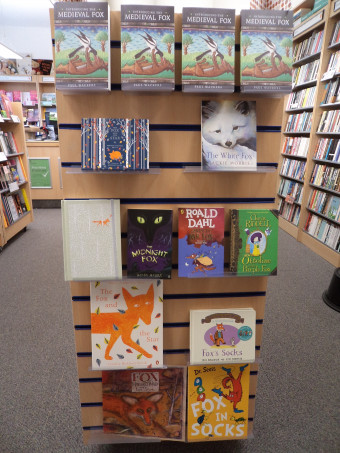
Finally, I thought I would return to the animal theme but rather than foxes I thought I would just mention a few references to bears, especially because bears were in the news recently regarding a rescued bear called Boki who is being introduced slowly to other rescued bears, Fluff and Scruff, who now live happily at Wildwood in Blean to the north of Canterbury. These bears from Elizabethan Canterbury did not have the benefit of other bears for company, but at least one of them did get exercise, its owner, John Blye, fined by the civic authorities for taking it for a walk along the city wall. However, Thomas Ramsey’s bear had a far more difficult existence, Ramsey fined at the city’s quarter sessions for keeping dogs as well as the bear in the backyard of his house much to the annoyance of his neighbours.
For my other three examples, I’m again very grateful to Professor Steven Gunn for his fascinating project on coroners’ inquests and it is his ESRC-funded ‘Everyday Life and Fatal Hazard in Sixteenth-Century England’ research project that he will be drawing on for his lecture at Tudors & Stuarts 2023, this is the main website link and then see details for his talk: https://www.canterbury.ac.uk/tudors-stuarts
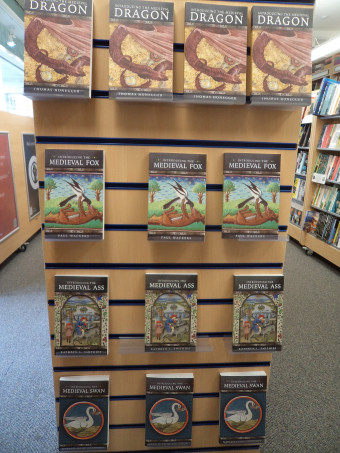
So now to these bears and how these human – bear encounters ended up at the coroner’s court. The first incident took place at Henry Nevill, Lord Bergavenny’s manor house at Birling, one of several seats belonging to the family but a parish where several family members were buried, including this Henry. On the morning in question, Agnes Rapte, a widow, was in the hall at 8 o’clock on 3 August 1563, but why she was there is not stated (her occupation is not given either). However, it seems Thomas Adkynson, one of Lord Bergavenny’s servants was also present, possibly having the lord’s bear in his custody. Suddenly the bear broke loose and turned-on Agnes, biting her head, body and legs, suggesting that this was a highly ferocious attack. Indeed, the poor woman was very badly wounded and died less than 6 hours later. The bear, too, was killed, Lord Bergavenny taking no further chances with his animal, ordering John Washenes, another servant, to shoot it dead with a handgun, which he promptly did, thereby seen as restoring peace to the house, the inquest taking place early the following year.
The other human – bear encounters I have seen in Steven’s database did not take place in Kent. The first took place two years later but at the other end of the country in Cumberland. At 3pm one July day in 1565 a boy was standing in the market in Carlisle when suddenly he was confronted by a bear that had escaped from its keeper. Apparently still wearing its iron collar (why this detail is recorded is not stated), the bear attacked the boy, fatally wounding him by biting his stomach. In this case the fate of the bear is not recorded.
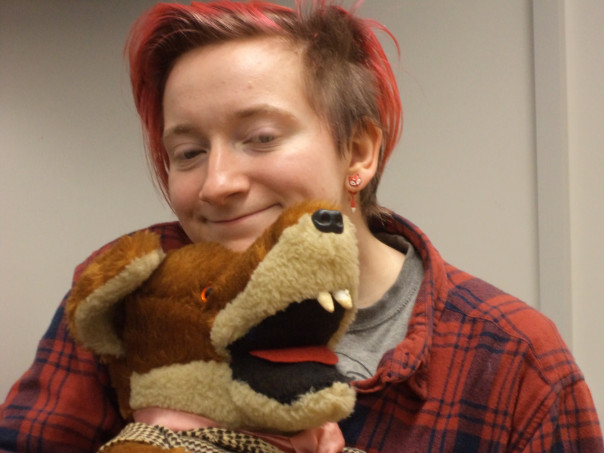
Oxford, too, was the site of a fatal bear attack that year but this time in October when a 24-year-old man called Christopher was similarly attacked. The incident took place outside Oxford’s North Gate at what had been the Austin Friary in Holywell parish and is now part of Wadham College. The owner of the bear is not named, but the bear was valued at 26s 8d, which suggests that unlike Lord Bergavenny’s bear it was not killed but rather impounded and maybe sold thereafter. Whether Christopher’s status had a bearing on this outcome is not clear, but he was obviously poor – he had neither goods, chattels nor land, was probably a stranger in Oxford and may have had to beg for his living.
Even though details are pretty sparse in all of these cases, collectively they do offer some interesting ideas regarding early modern attitudes towards wild animals, the sorts of spaces where one might encounter a bear, and the value society placed on people of differing social status. And for next week, I’ll be able to report on the recent activities of members of the Kent History Postgraduates.
 Centre for Kent History and Heritage
Centre for Kent History and Heritage Sheila Sweetinburgh
Sheila Sweetinburgh 2088
2088


Thank you Sheila, a most interesting and informative commentary
Thank you for interesting blog Sheila
Do you know when and why John Blye kept a bear?
Would it have been brought in from abroad and kept as a pet or killed later for meat? or serve some other purpose?
Thanks Ian, the most likely explanation is that it was used as a ‘dancing bear’, which was a medieval form of entertainment, but according to the Bear Conservation website was becoming less common in western Europe by the 15th century, albeit there were still instances in England into the 19th century (outlawed 1911). However, common sight in parts of eastern Europe and Asia into the late 20th century. There are images of such bears in medieval manuscripts, for example, Oxford Bodleian MS Bodley 264.